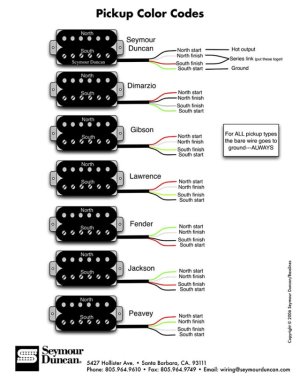donovanlopez
Newbie
- Messages
- 0
Guitar Brothers in Arms, please help this noob!!! I have an acoustic guitar that I am attempting to electrify. Hardware involved:
1. EMG 89-X humbucker w/ tone and volume pot (9v)
2. Cherub G-Tone G6 piezo under saddle p'up w/ active preamp (9v)
3. 1 stereo output jack
4. 3 way toggle switch to swith between EMG and piezo p'up.
Can someone...ANYONE point me in the right direction for a wiring schematic that wires up two totally different types of p'ups, PLEASE??!!! I just can't figure it out!!!
1. EMG 89-X humbucker w/ tone and volume pot (9v)
2. Cherub G-Tone G6 piezo under saddle p'up w/ active preamp (9v)
3. 1 stereo output jack
4. 3 way toggle switch to swith between EMG and piezo p'up.
Can someone...ANYONE point me in the right direction for a wiring schematic that wires up two totally different types of p'ups, PLEASE??!!! I just can't figure it out!!!



